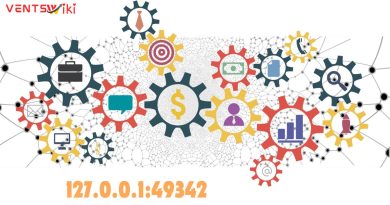TechFlex: Redefining Flexibility in Technology
Introduction
In the fast-paced world of technology, flexibility is key to staying ahead. TechFlex is a revolutionary concept that emphasizes adaptability and innovation, offering a fresh perspective on how technology can evolve to meet the ever-changing demands of users. This article explores the essence of TechFlex, its implications for various sectors, and how it stands to transform the tech landscape.
What is TechFlex?
TechFlex is an approach that prioritizes adaptability, scalability, and user-centric design in technology solutions. Unlike traditional tech solutions that can be rigid and inflexible, TechFlex embraces a dynamic model where systems and tools can evolve based on user needs, market trends, and technological advancements. This concept is grounded in the idea that technology should be as fluid and versatile as the environments it operates in.
Core Principles of TechFlex
- Adaptability: At the heart of TechFlex is the principle of adaptability. Technology should be capable of adjusting to new requirements, be it through software updates, hardware upgrades, or integration with other systems. This ensures that tech solutions remain relevant and effective over time.
- Scalability: TechFlex emphasizes scalability, allowing systems to expand or contract based on demand. This principle is crucial for businesses that experience fluctuating workloads or growth spurts, as it ensures that their tech infrastructure can handle varying levels of activity without performance degradation.
- User-Centric Design: TechFlex advocates for a user-centric approach, where technology is designed with the end-user in mind. This means creating intuitive interfaces, providing customizable options, and ensuring that technology can be tailored to fit individual needs and preferences.
- Interoperability: In a TechFlex framework, interoperability is key. This involves designing systems that can seamlessly integrate with other technologies, platforms, and services. Interoperability ensures that different tech components can work together harmoniously, enhancing overall efficiency and functionality.
Applications of TechFlex
TechFlex has far-reaching implications across various sectors. Here are a few key areas where its principles are making a significant impact:
- Business Solutions:Businesses are increasingly adopting TechFlex principles to enhance their operational efficiency. For instance, cloud computing services are a prime example of TechFlex in action. They offer scalable resources that can grow with the business, along with the flexibility to adapt to changing needs. Additionally, customizable enterprise software solutions enable businesses to tailor applications to their specific requirements, improving productivity and user satisfaction.
- Healthcare:In the healthcare sector, TechFlex is transforming how patient care is delivered and managed. Electronic Health Records (EHR) systems, for example, are designed to be adaptable to different healthcare practices and regulations. Telemedicine platforms also benefit from TechFlex by offering scalable solutions that can accommodate increasing patient volumes and evolving healthcare needs.
- Education:The education sector is leveraging TechFlex to create dynamic learning environments. Online learning platforms and educational software can be customized to fit various teaching methods and learning styles. Moreover, scalable solutions allow educational institutions to accommodate a growing number of students and integrate new tools and resources as they become available.
- Consumer Technology:For consumer technology, TechFlex means providing devices and applications that can adapt to users’ changing preferences and needs. Smart home systems, for example, can be easily customized and expanded with new devices, while software updates ensure that applications remain current with the latest features and security patches.
Benefits of Embracing TechFlex
- Enhanced Efficiency: TechFlex enables systems to perform optimally by adapting to changing conditions and requirements. This leads to more efficient operations, reduced downtime, and improved overall performance.
- Cost Savings: By adopting scalable solutions, businesses and individuals can avoid the costs associated with over-provisioning or under-provisioning resources. This ensures that investments in technology are aligned with actual needs, leading to better financial management.
- Future-Proofing: TechFlex helps future-proof technology investments by ensuring that systems can evolve with technological advancements and market trends. This reduces the need for frequent overhauls or replacements, extending the lifespan of tech solutions.
- Improved User Experience: A user-centric approach ensures that technology is designed with the end-user in mind, leading to more intuitive and satisfying experiences. Customizable options and adaptable interfaces make technology more accessible and easier to use.
Challenges and Considerations

While TechFlex offers numerous benefits, it also presents certain challenges. Ensuring compatibility between different systems and maintaining security in a flexible environment can be complex. Additionally, the need for continuous updates and adaptations requires a proactive approach to technology management.
Conclusion
TechFlex represents a paradigm shift in how technology is developed and utilized. By focusing on adaptability, scalability, user-centric design, and interoperability, TechFlex is set to redefine the future of tech solutions. Embracing this approach allows businesses, healthcare providers, educators, and consumers to enjoy more efficient, cost-effective, and user-friendly technology. As we continue to advance into an era of rapid technological change, TechFlex will play a crucial role in shaping a more flexible and dynamic tech landscape.




